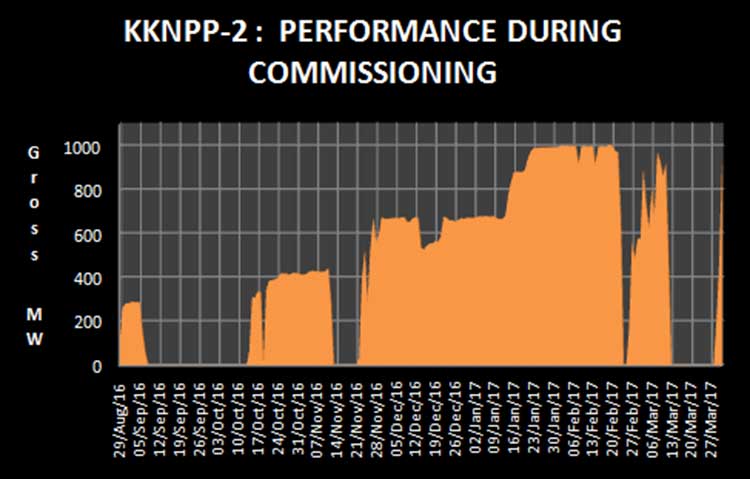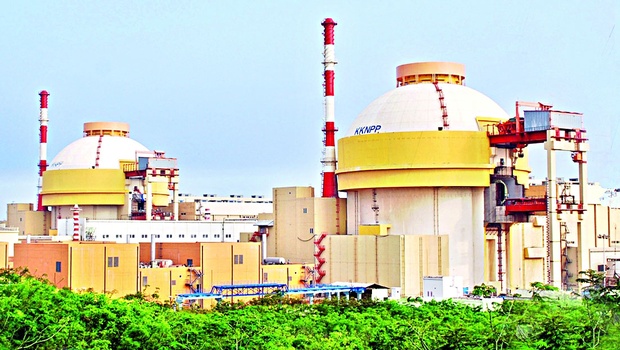
When Republic TV journalists carried a so called sting operation on S.P Udayakumar, one of the leaders of the movement against Koodankulam Nuclear Power Project in Tamil Nadu, Koodankulam have again become in the news. There are two allegations that people who were protesting the Koodankulam power project under the umbrella of People’s Movement Against Nuclear Energy is faced time and again. The first is, they are getting foreign money to protest against the project and those who are protesting against the project are protesting against the interests of the nation, hence they are anti national. S.P Udayakumar has already moved to the Press Council against Arnab Goswami and Republic Channel stating the harassment on him and his family, read the petition by S.P Udayakumar here http://www.indiaresists.com/arnab-goswami-republic-harassing-family-read-s-p-udayakumars-letter-press-council/. As far as the allegations of foreign money is concerned, it’s evident from the video footages that S.P Udayakumar is asking from the person and her family to contribute for his political party called Green Party to which he said will be giving a receipt it is very normal practice in India. However, he is not asking money for the People’s Movement Against Nuclear Energy that is leading the protests. Hence, it’s baseless to accuse asking money for the protests. The foreign money is not a new allegation in Koodankulam, it was alleged that Koodankulam protest is backed by the church and foreign countries on the basis of the fund that Church use to get for the charity activities in the region. One should visit the villages and see the hospitals, schools and other basic amenities here provided by the charity organizations where the development of the government has not yet reached. The funds that they get for the charity were alleged as the foreign hand to protest without any evidences. People’s Movement Against Nuclear Energy has made it very clear again and again that, they have not received and would not like to receive any money during the course of protest from any local or international NGOs. It has been running out of the contributions from the local people who will be affected in Koodankulam, Idinthakarai and other villages.
However, there are few other developments that have taken place in Koodankulam which is not part of much channel discussions and news reports. Koodankulam Nuclear Power Project to which the foundation was laid during 1989, after long years of delays, uncertainties, irregularities, illegalities and repeated protests at the project site the Prime Minister Narendra Modi and Russian President Vladimir Putin and Tamil Nadu Chief Minister Jayalalithaa, the first 1,000 MW unit of Koodankulam Nuclear Power Project (KNPP) was dedicated to the nation last year. According to NPCIL the reactor in Koodankulam has started generating electricity. After this, the ASE Group, a subsidiary of Russia’s ROSATOM State Atomic Energy Corporation, have also announced that the foundation of the unit three of the Koodankulam Nuclear Power Project (KNPP), will be laid by the end of June or beginning of July. In another development, India’s Atomic Energy Regulatory Board (AERB) has announced that, it has given its nod to the Nuclear Power Corporation of India Ltd (NPCIL), the nuclear reactor operator of the country for the first pour of concrete for the third and fourth units at Koodankulam. It is said that, the clearance to the third and fourth units at Koodankulam Nuclear Power Project (KNPP) was granted based on detailed safety review and satisfactory compliance to regulatory requirements. However, it’s an illegal move from The Atomic Energy Regulatory Board (AERB) which went ahead giving clearance to the construction activities. Criteria for regulation of health and safety of nuclear power plant personnel, the public and the environment, 2001 by Atomic Energy Regulatory Board, see here
http://www.aerb.gov.in/AERBPortal/pages/English/t/publications/CODESGUIDES/SG-G-08.PDF Para 2.4 (b) of the Criteria reads: The basic goal of NPP siting is to locate the reactor in a relatively low population zone. For this purpose, the population around the plant shall be controlled as follows:
The following are the criteria for granting permission for Nuclear power plants:
(i) Population density within 10 km of the site shall be less than 2/3 of the average population density in the state;
(ii) There should be no population centre of greater than 10000 persons within 10 km of the plant;
(iii) There should be no population center of more than 1 lakh persons within 30 km from the plant; and
(iv) The total population in the sterilized area should be small, preferably less than 20,000″.
However, in the case of Koodankulam, Within a distance of 5 km from the site for KKNPP Units 3 to 6 (sterilized zone) there are three villages viz. Koodankulam, Vijayapathi, and Erukkandurai having a population of 23,060 (as per 2001 census). The criteria mandate that the population should not exceed 20000 in the sterilized zone. As per 2011 census, the population of these villages is 28,397. Since the sterilized zone is having more population than what is provided under the Criteria, the AERB ought not to have granted the FPC clearance to the units in question.
The Costel Zone clearance granted to units 3 to 6 of Koodankulam is based on an Environment Impacts Assessment done by Engineers India Ltd, an unaccredited agency to do EIA for Nuclear Power Plants and it is under Supreme Court review and in such context granting the clearance to the new reactors is also in question.
People in Koodankulam, Idinthakarai and other villages have not yet forgotten the state violence throughout the opposition movement in Koodankulam. Those who were protesting against the plant were arrested and cases were charged on them including sedition and waging war against the state. There were around 8000 people charged for sedition, the highest number of sedition cases charged in independent India. Many people gave life in Koodankulam against the power plant, the first ever victim was a young man of 19 called Ignatius in May 1989, a year after plan for the plant were first announced. A peaceful rally in Kanyakumari was dispersed by police firing leaving one family without their teenage son. Many fisher men also injured in the police firing, later in 2012 when police fired to a solidarity protest to clear a highway blocked by demonstrators nearby Tuticorin in Manapadu village, 44 year old Anthony John, a fisher men was killed. The third martyr was 42 year old Sahayam during Jal sathyagraha (Sea-based Civil Disobedience) in Idithingari, he had claimed on a rock on the coastal line to participate in the protest, suddenly an air craft on the air force which was keeping vigil of the protest swooped dangerously low in that Sahayam lost his balance and fell on the rocks and to water and later declared dead in the hospital at Nagercoil. Hundreds of people including women, children and elder people were injured out of police atrocity; the crime they committed was just opposing the irregularities of the nuclear establishment and peacefully questioning the development model that the Indian state was imposing on them. This movement which got international attention and mass support from all over the country had posed serious threat towards the nuclear expansion of India hence, the nuclear establishment in India want to break the movement and want to suppress any dissent. It’s important to note that, apart from the existing illegalities, violations of procedure, new reactors are illegally going to be constructed in Koodankulam, government and the nuclear lobby wants to ensure no protest takes place against this. Hence, the leaders against the project has to be silenced, this is the context Republic TV claims to expose the leader of Koodankulam protest.
Reference
Criteria for Regulation of Health and Safety for Nuclear Power Plant Personnel, the public and environment, Issued in June, 2001, Atomic Energy Regulatory Board Mumbai 400 094.
Ajmal Khan is researcher based in Mumbai












































